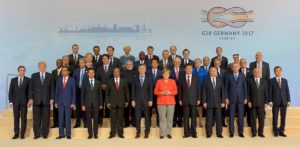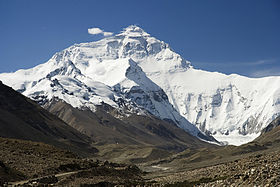
Everywhere I look I see new corporations that did not exist a few decades away leading the charge for the future of humanity. While the middle class in America is very troubled at its shrinking future, there are other areas where America is truly great and continues to flourish and make billion dollar enterprises, with some approaching trillion dollar valuations. The rise of Trump and his denial of climate change, and attempts at reviving coal and fossil fuels,, and the new age successful entrepreneurs embracing green energy and reducing emissions, is a dichotomy approaching loggerheads with each other. People have voted for security as he has fanned their base fears of an existential threat, to our way of life, saying only he can help fix it. The five principles mentioned above by PWC show exponential progress is possible, from our current human condition.
Let us examine the new trends and see if in this time of great change in human existence, to understand if there any hope, for a brighter future. Firstly people in the rust belt are right as the mass secure employment offered by huge assembly lines, and the manufacturing era, is fast vanishing. Automation and robotics are fast replacing manual labor. An example is that the latest steel plant in Germany producing high value products, is run by just 11 people, monitoring all the production on video screens and sensors. The era of the rugged steel worker facing scalding smelting pots, in Andrew Carnegie’s and J P Morgan’s US Steel is now officially over. Machines will carry out the labors repeatedly and with lesser errors, than men and women doing physical labor.
Manufacturing and mining jobs are taking a hit as new systems and machines evolve. The new auto factories have armies of robots doing repetitive tasks, like welding and painting with great precision, 24 hours a day. Machine learning is making the machines ever smarter every day, and they are able to see, feel, adapt and repeat with increased precision and productivity. The glory days of manual human labor is receding and machines are making our lives easier, by doing the work that caused endless repetition and back breaking work, by our fellow beings. We will enjoy the fruits of these advanced machines making products ever faster and more economically; and designers, engineers and visionaries will use the machines to produce products just in time, to meet our needs. Rosy the riveter is now a machine.
Logistics is going through a sea change from what it was, and what it will become. If we go to a modern warehouse we find that increasingly there are no men riding forklifts ferrying pallets and goods, across racked spaces and trying to keep track from memory, where the goods are. Now sophisticated robots store and retrieve goods in huge cavernous spaces, where only sophisticated computers remember where each barcoded or RFD item is stored. Where hundreds worked in labor daily, now a handful monitor and program the arrival and departure of goods. The development of autonomous trucking, will further remove the thousands of drivers, who drive through the night to make a living and keep our stores full. Even the railroads will become autonomous, as trains will move through automated signals and routing, day and night with no human error.
In agriculture there are fewer people on the farms, as the new machines are computerized wonders. A modern farmer can single handed do what took hundreds toiling day and night in the fields in the last century. The seeds are genetically improved – a process going on since the Inca and the Maya’s improved corn, by selectively cross breeding large grasses, into what we know today. Cotton production in India improved substantially as an example, from using the new seeds. Pest resistant, drought resistant varieties help farmers to ensure a good harvest, where previously the weather gods and nature dictated the outcomes of an year’s work. New drip irrigation techniques and fertilizer application optimization, is leading to greener farming, with less run offs and environmental damage. We can fight the change, but it is surely coming, as we will need to feed 7 plus billion humans soon with a more nutritious, healthy and assured diet.
The Service sector is the mainstay of any modern society and the changes here are probably the most visible, to the ordinary man or woman on the street. Communication devices have become smaller, smarter and ubiquitous. The ability to mass produce and ensure communication seamlessly globally, is a modern reality and some of the greatest minds are working tirelessly, to make it even better. Modern banking and the cashless society are becoming a reality. The middle men are being squeezed out of the supply chains and the managing of money and assets as machines do not make mistakes and follow instructions instantaneously. Global trade and services will continue to improve despite all national efforts, to control things at our border, as it is becoming a flat world with economies of productivity going, to the lowest cost producers.
Finally our homes and cities are changing at an increasing pace. iRobots, electronic washing machines, fridges, internet connected lighting systems, are all examples of how small machines, can save the drudgery of housework. The Internet of things is developing faster than imagined and the digitization of society will proceed at a faster pace. Our grandchildren will wonder why we owned cars and drove polluting vehicles in our cities killing thousands in preventable accidents. Even our music and entertainment is now delivered 24 hours a day long as we have a connected device and can watch sitting in our own homes. Meals and produce is going to be delivered on order seamlessly and no physical cash or human interaction will be required as drones deliver to our doorstep. We will order from the likes of Alexa and the bounty of our universe, will come to us. Smart cities will emerge making life easier for our citizens.
Even Financial institutions as we know them with their great bastions of secure banking and physical assets and authentication, are changing fast. Blockchain authentication and digital transactions will be at our fingertips and devices. A visit to the bank for doing a transaction will be unknown to our Grandchildren, as the new financial systems and crypto currency evolve. The thousands of bank tellers and service personnel, will be replaced by machines and sophisticated authentication system. Crony capitalism will stand exposed, as markets and transactions become more transparent, and regulators will shrink in number, replaced by ever vigilant machines and systems.
So to conclude the middle class is in a grave danger of shrinking as the jobs of today, will be gone tomorrow, in huge numbers. Yet I have full faith in humanity and the human spirit, as we are more capable than the machines, which will replace us. We will rise to even a better future for our human race as we will find better things to do, than the drudgery of some of today’s jobs. The five principles outlined above will guide us to a better future, as technology will be a great enabler. I remain optimistic that we can and must do better, for ourselves and our grandchildren. We will have to reskill the workforce to meet the challenges of tomorrow’s humans, and that race is now on in earnest. .
‘Power will flow to enterprises that embrace automation, reduce internal costs, make better use of advanced devices, design modularity into their products and services, and participate in blockchain-style verification systems.’ By John Sviokly who is a principal and U.S. marketing leader at PwC, where he also works with clients on strategy and innovation. He is the head of the Global Thought Leadership Institute.









